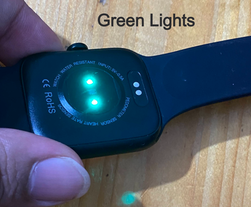If you love music, you understand how sound quality can transform your listening experience. Today, various audio file formats exist, each with distinct traits that can impact how you enjoy your favourite tracks. Whether you stream songs, download albums, or create mixes, grasping these audio formats is vital for full enjoyment.
In this comprehensive guide, we will delve into the intricacies of some of the most popular audio file formats available today, examining their unique characteristics, advantages, and potential drawbacks. Audio file formats play a crucial role in how we store, transmit, and experience music, and understanding these formats will empower you to make informed decisions that align with your personal music preferences and listening habits.
We will begin by discussing lossless formats, such as WAV and FLAC, which preserve the original quality of the audio, making them ideal for audiophiles who prioritise sound fidelity. These formats maintain all the data from the source material, resulting in larger file sizes but ensuring that every nuance of the music is captured.
Next, we will explore lossy formats like MP3 and AAC, which compress audio files to reduce their size, making them more convenient for storage and streaming. While these formats do sacrifice some audio quality in the process, they are widely used due to their compatibility with various devices and platforms, as well as their ability to provide a satisfactory listening experience for the average listener.
Additionally, we will touch on other formats such as OGG and ALAC, highlighting their unique features and the scenarios in which they might be the best choice for different users. For instance, OGG is known for its efficient compression and is often used in gaming and streaming applications, while ALAC offers a lossless alternative for Apple users who want to maintain high audio quality without sacrificing compatibility.
By the end of this guide, you will have a deeper understanding of the various audio file formats, their specific features, and how they align with different listening scenarios. Armed with this knowledge, you will be better equipped to choose the right audio format that not only fits your music preferences but also enhances your overall listening experience, whether you're enjoying music on the go or curating a high-fidelity home audio setup.
The Basics of Audio File Formats
Audio files come in a variety of formats, each affecting sound quality, compatibility, and file size. Some formats suit casual listening, while others cater to serious music lovers seeking the highest fidelity. Let’s dive into these formats in detail to help you make an informed choice.

WAV: The Raw Audio Format
WAV files (Waveform Audio File Format) are uncompressed audio files offering the highest sound quality. This means that you hear the exact sound an artist intended, albeit at the cost of large file sizes—one minute of WAV audio can take up around 10 MB.
WAV is typically used in recording and editing because of its accuracy. While impractical for day-to-day listening due to size, it’s essential for professionals in the music and film industries. If you love producing or mixing audio, WAV will meet your needs incredibly well.
FLAC: The Lossless Wonder
For those who seek the finest sound quality, FLAC (Free Lossless Audio Codec) is a transformative choice. This format compresses audio without sacrificing quality, delivering pristine sound that captures every nuance.
FLAC files are larger than MP3s and AACs—typically three to five times larger—making them less convenient for casual listeners. However, for serious music connoisseurs, investing in high-quality equipment like a DAC (digital-to-analog converter) to listen to FLAC files is a game changer.
Commonly used by enthusiasts, FLAC is perfect for music collections demanding exceptional fidelity and detail.
MP3: The Ubiquitous Format
The MP3 format is perhaps the most recognized audio file in the world. It compresses audio files significantly, reducing size while maintaining decent sound quality. In fact, an MP3 file can be about one-tenth the size of its original, uncompressed counterpart without a major drop in audio performance.
For the average listener using smartphones or streaming services, MP3 strikes a perfect balance between size and sound quality. According to the International Federation of the Phonographic Industry (IFPI), 75% of music listeners still prefer using MP3 files for everyday experiences.
However, audiophiles may find MP3s lacking in detail at lower bit rates. This format suits casual listening and scenarios where storage space is tight.
AAC: An Enhanced Alternative
AAC, or Advanced Audio Codec, is often seen as the improved successor to MP3. It delivers better sound quality at similar bit rates, making it popular among music streaming platforms like Apple Music and YouTube Music.
One notable advantage of AAC is its efficient compression, which is vital for mobile users looking to save data while enjoying high-quality audio. For example, a 256 kbps AAC file can often sound better than a 320 kbps MP3 due to its advanced encoding techniques. However, AAC files can face compatibility issues with certain devices.
If you value audio quality but use a variety of devices, exploring AAC may be beneficial.

ALAC: Apple's Lossless Format
Much like FLAC, ALAC (Apple Lossless Audio Codec) allows for lossless audio compression but is designed for Apple's ecosystem. If you use services like iTunes or Apple Music, ALAC becomes a great option.
ALAC keeps your audio quality intact while seamlessly integrating with your Apple devices. However, it's worth noting that ALAC isn’t as universally supported outside the Apple environment compared to FLAC.
DSD: The Luxury of High Resolution
Direct Stream Digital (DSD) is engineered for high-resolution audio beyond even CD quality. This format appeals to those who relish nuances in sound and desire a more immersive experience.
DSD files can be significantly larger than typical formats, and due to their specific requirements, they may not work with all players. However, if you aim for that studio-quality sound at home, incorporating DSD recordings will elevate your audio journey.
OGG Format Details
The OGG format, developed and maintained by the Xiph.Org Foundation, represents a free and open container designed specifically for the efficient storage and streaming of high-quality multimedia content. This versatile format is not limited to just audio, but also supports a variety of other media types, including video and text, making it a comprehensive solution for multimedia applications.
OGG format offers flexibility by encapsulating multiple codecs, including Vorbis for audio and Theora for video, within a single file. Its open nature, efficiency, and broad compatibility make it a popular choice for multimedia storage and streaming. In addition to its technical advantages, the OGG format is supported by a wide array of software and hardware platforms, including media players, editing tools, and mobile devices. This broad compatibility enhances its accessibility and encourages its adoption across various industries, from music production to video game development.
Furthermore, the commitment of the Xiph.Org Foundation to open standards and transparency ensures that the OGG format will continue to evolve in a way that benefits users and developers alike, promoting innovation and collaboration within the multimedia community. Overall, the OGG format stands out as a robust and flexible solution for high-quality multimedia storage and streaming, championing the principles of openness and free access to technology.
Navigating Your Audio File Choices
The audio file formats you choose can significantly affect your listening experience. For everyday enjoyment, MP3 and AAC may suffice, while audiophiles might opt for FLAC, ALAC, or DSD for the best sound quality. WAV is excellent for professionals in audio recording and editing.
Every format has strengths and weaknesses, and the right choice ultimately comes down to your preferences and listening habits. With this knowledge, you can confidently explore the exciting world of audio files and take your music experience to new heights.
Whether you're a casual listener or a dedicated audiophile, the goal remains the same: to savor the music you love in the best possible quality!

Audio Format | Type | Compression | Bit Depth | Sample Rate |
WAV | Lossless | None | 16/24/32-bit | 44.1 kHz - 192 kHz |
AIFF | Lossless | None | 16/24-bit | 44.1 kHz - 192 kHz |
FLAC | Lossless | Lossless compression | 16/24-bit | 44.1 kHz - 192 kHz |
ALAC | Lossless | Lossless compression | 16/24-bit | 44.1 kHz - 192 kHz |
MP3 | Lossy | Lossy compression | 8/16/24-bit | 32 kHz - 48 kHz |
AAC | Lossy | Lossy compression | 16/24-bit | 44.1 kHz - 96 kHz |
OGG | Lossy | Lossy compression | 16/24-bit | 44.1 kHz - 192 kHz |
WMA | Lossy | Lossy compression | 16/24-bit | 44.1 kHz - 192 kHz |
DSD | Lossless | None | 1-bit | 2.8 MHz - 5.6 MHz |
M4A | Lossy or Lossless | Lossy compression (AAC) or Lossless (ALAC) | 16/24-bit | 44.1 kHz - 192 kHz |


















Comments